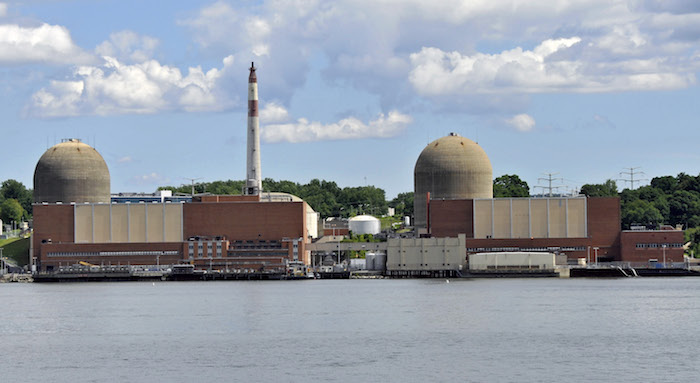
Despite what pro-Indian Point interests claim, it’s a false dichotomy to say that New York’s only energy choices are between Indian Point, a dangerous old nuclear plant, and power from fracked gas. Neither is a good choice, nor are they the only choice for New York. Instead, we must continue the transition from dirty power to clean renewable energy, energy efficiency and storage. The terrible COVID-19 epidemic shows that unlikely catastrophic events occur if we wait long enough and do not take proactive measures to reduce the risks of such events. The closure of Indian Point is one such measure to reduce risk to New Yorkers.
Our energy transition is already underway, as shown by a recent study by PSE Healthy Energy, which found that since Indian Point’s closure was announced, annual renewable generation and energy efficiency savings have increased roughly 6,550 GWh statewide, equivalent to the energy generated by the reactor that will shut down this week.. Clean sources now in operation or under development will contribute some 20,000 GWh annually by 2024, exceeding Indian Point’s total annual generation of 16,334 GWh. By 2025, New York’s landmark 2019 Climate Leadership and Community Protection Act is poised to drive an additional 23,600 GWh in solar energy and efficiency savings.
Put together, that’s enough green power and demand reduction to close Indian Point more than 2.5 times over. And, that’s before we add another 1,700 MW in offshore wind capacity, which the state contracted for in 2019. The drive for renewables also got yet another boost from measures to streamline siting processes and regulations that will close dirty peaking plants.
The risks of Indian Point are real, as shown by the12-month period preceding the 2017 closure agreement, when Indian Point suffered seven major malfunctions — pump and power failures, a transformer explosion, radiation leaks, a fire and an oil spill. Then, as if to put an exclamation point on the case for closing Indian Point, inspection results released just after the closure agreement was announced showed that over 30 percent of the bolts holding the plant’s two operating reactor cores together had become impaired, by far the worst result of any such tests at any reactor, worldwide.
Furthermore, a 2011 Nuclear Regulatory Commission study rated Indian Point number one for risk of meltdown due to earthquake, and a 2003 study commissioned by then-New York State Governor George Pataki concluded that the plant’s evacuation plan would fail to protect the public in an actual emergency. Most recently, the NRC’s Office of Inspector General showed that safety evaluation for the siting of a high pressure gas pipeline close to Indian Point was riddled with flaws.
 CityViews are readers’ opinions, not those of City Limits. Add your voice today!
CityViews are readers’ opinions, not those of City Limits. Add your voice today!
Finally, at this point, the closure of Indian Point is a settled matter both legally and practically. Entergy, the plant’s owner, is already in the process of shutting down the plant, pursuant to the terms of the 2017 agreement it signed to do so. Not only has Entergy begun to shut Indian Point down, it’s also in contract to sell the plant and transfer all its licenses to a new owner, solely for the purpose of decommissioning the site.
Let’s learn from the COVID-19 crisis. We need to take measures to reduce potentially catastrophic risks as quickly as possible. Closing Indian Point will greatly reduce the risk of a nuclear accident, while the transition to renewable power will reduce the risk of climate change and improve air quality.
We don’t have to choose between staying in the frying pan or jumping into the fire. Instead, we are closing Indian Point while reducing reliance on fracked gas with the transition to renewable energy, energy efficiency and storage.
Richard Webster is Riverkeeper’s Legal Program Director
An Opposing Viewpoint
Closing Indian Point Puts Phantom Risks Ahead of Real Perils









4 thoughts on “Opinion: Now More Than Ever, Indian Point Must Close”
While I agree that Indian Point needs to close, we need to remember that the Grid is very weak. “The truth is the PSC knows without the Nuclear plants, the Grid will fail. “In North Greenbush, Rensselaer County: The New York Independent System Operator, which oversees the state’s electrical grid, says there will be plenty of power for the next 10 years, the Albany Times Union reports. NYISO tempers its optimism by noting that if environmental policies change, or if one of the two Indian Point nuclear reactors downstate is shut down, the outlook could change.” Many coal fired plants have been shut down. The RG$E Russell and Bee Bee Stations, are being torn to the ground right now. Both could have been converted to gas, which would have helped. With out Ginna, Monroe County will go dark !”
The real reason Lake Ontario is too high ! The regulations imposed by the IJC starting in the late 1950s and modified by the current plan are man interfering with nature. The lake is maintained at an high level to benefit electric production and shipping and to minimize flooding and ice damage on the St Lawrence River. Yes there has been an unusually high level of snow and rain, but regulation (man attempting to control nature) are at the root of the problem. Current high rainfall is just a scapegoat that politicians and the IJC have blamed. Anyone who doesn’t believe this needs to do the research on lake level, high and low, before regulation and after. Old Fort Niagara has stood at the mouth of the Niagara river at Lake Ontario for several hundred years, going thru several high water events. This year has been the worst, because after 60 years of regulation the lake average regulated depth as crept slowly higher. Add unusual rainfall and you get flooding and an easy scapegoat.
There has always been a very cozy relationship between the NRDC, Riverkeeper, and the PSC. Remember Dale Bryk and her sidekick Miles Farmer came from the NRDC and got senior positions in the Cuomo administration ( Both recently left,no public explanation given). Remember also the September 25, 2019 presentation given by Tom Congdon, PSC’s Chief-of-Staff at an Indian Point Closure Task force meeting. There Condgon put up the chart that falsely said that RE +EE could replace Indian Point, by the time they were shut down. Why did the PSC feel compelled to put up this chart when IP2 was scheduled to be closed a few months later? I believe they did this to give cover to Riverkeeper who had been pushing for the CHPE (Canadian hydro-power) to replace IP. Well, the CHPE project never got started and the IP2 closure date was looming. Along comes the PSC with an alternative scheme to replace IP and soon thereafter Riverkeeper publicly dumps the CHPE project because it claimed that harmful dams would have to be built in Canada to make the CHPE project happen ( Don’t know if this is true). Riverkeeper extols the virtues of the PSC (Congdon) presentation in public statements, explaining why they no longer supported CHPE?
Riverkeeper has consistently misrepresented the facts. Last November Paul Gallay promised that Indian Point 2 would be replaced by renewable energy and energy efficiency by its closure date. This has not happened. Indian Point 2 has been replaced by fracked gas, the very thing Riverkeeper claims to be opposed to. Now Richard Webster comes along and misquotes the PSE Brief which clearly stated “…it is possible that a portion of the plant’s generation might be temporarily replaced with gas generation rather than renewables”. A recent critique investigated just how long “temporarily” might be and concluded that, even if every on-shore and off-shore wind turbine and every solar panel in the state were used to replace IP as quickly as possible, it would take over 8 years to do this. In the meanwhile using gas to make up for the electricity shortfall would release about 35 million metric tons of greenhouse gases into the atmosphere.
Riverkeeper never explains why replacing one non-carbon source of electricity with another non-carbon source is good environmental practice, especially since today renewable energy and energy efficiency are displacing gas. Instead they continue to foster baseless claims like having to evacuate 50 miles in an accident. Experts state that a two mile evacuation plus downwind sheltering would result in zero or near zero offsite radiological consequences if an accident occurred. Riverkeeper needs to relocate from Ossining close to Indian Point if they fear earthquakes. Indian Point is designed to handle very strong earthquakes and safely shut down. Any earthquake as large as Indian Point’s design basis earthquake might just collapse their Ossining office, along with all the other damage and fatalities it would cause. Indian Point’s containment building is very robust, it would be the last building standing.
Riverkeeper owes the public an explanation. What did they know and when did they know it? Riverkeeper, Entergy, and NY State were “three men in a room”, when in 2017 the Closure Agreement was drawn up which precisely identified, to the day, when Indian Point 2 was to close. Was it an amazing co-incidence that the construction of the gas plant replacement for Indian Point 2, the Cricket Valley plant, came on line immediately after Indian Point 2 closed? Did Riverkeeper always know that gas would replace Indian Point?